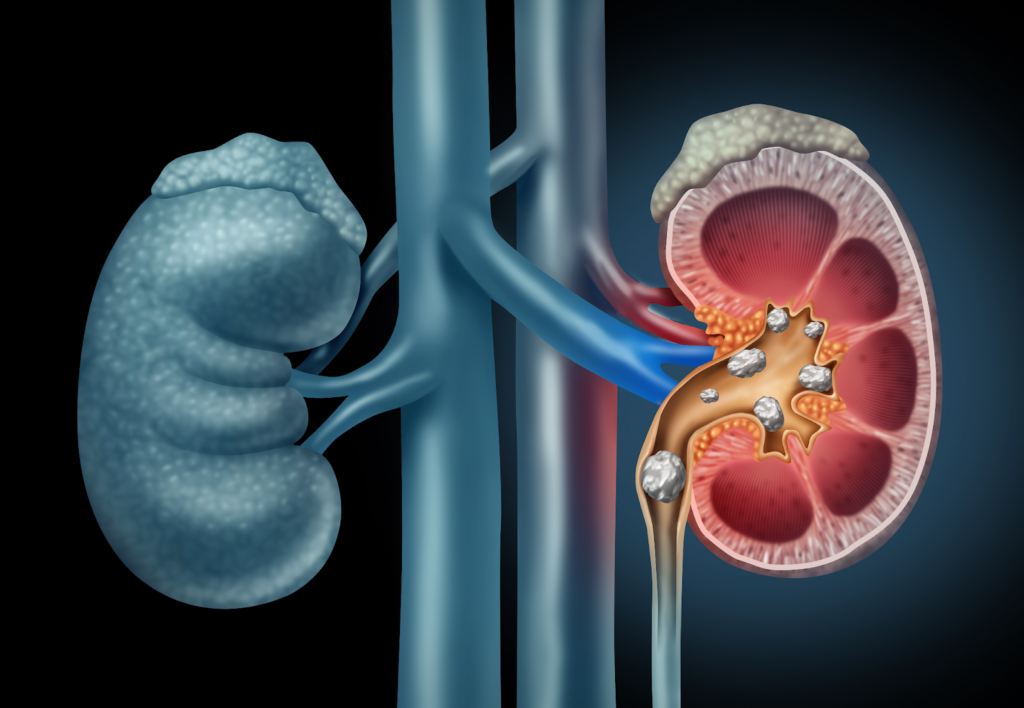Have you ever experienced the gruelling pain of a strained lower back? An abrupt movement, lifting a heavy object, or bending incorrectly can all cause lower back pain. And in this article, we will share tips on how to strengthen lower back, especially for seniors.
Lower back pain is far more than just a minor annoyance for a small number of people. According to a National Health Service report in the UK, up to 11% of seniors experience lower back pain yearly. This statistic alone highlights the importance of focusing on the strength and wellness of our lower backs, especially as we age.
This article intends to share with readers how to strengthen lower back by focusing on lower back exercises that improve flexibility, increase strength, and reduce the likelihood of future discomfort.
Table of Contents
What is Lower Back Pain?
Lower back pain is common, ranging from a mild, constant ache to a sudden, sharp sensation. It’s typically caused by straining the complex network of muscles, ligaments, discs, and bones that comprise our lower back region. But what is this vital body area, and how can we strengthen our lower back to prevent these discomforts?
The lower back’s lumbar region comprises five vertebral bones, L1 to L5, nestled between the thoracic vertebrae above and the sacrum and coccyx below. It supports the upper body’s weight and is integral to our body’s structure. The lower back also ensures mobility, allowing us to twist, bend, and extend ourselves in various directions. Therefore, this area’s strength and flexibility are crucial for daily activities.
If you’re seeking guidance on how to strengthen lower back, let’s explore effective exercises and strategies to enhance your resilience.
Common Causes of Lower Back Pain
Lower back pain is a complex condition often linked to various factors and health conditions. The road to understanding how to strengthen lower back, and incorporating regular lower back exercises into your daily routine, should be accompanied by knowledge of the common causes that lead to such pain.
These causes are numerous and varied and include:
- Physical Activities and Postures
Our daily movements, lifting techniques, and general posture can greatly affect the health of our lower back. Unhealthy practices such as improper lifting, sudden awkward movements, or a sedentary lifestyle can strain our lower back, leading to pain and discomfort. Regular lower back exercises can help strengthen the muscles in this area and improve flexibility.
- Ageing and Degenerative Disc Disease

As we age, our bodies naturally undergo a process of degeneration. It may result to lower back degenerative disc disease, in which the discs between our vertebrae lose their cushioning ability. This degeneration can cause chronic pain and discomfort in the lower back.
- Lumbar Spinal Stenosis
This condition develops when the spinal canal in the lower back narrows, putting tension on the spinal cord and nerves that pass through it. Lower back pain, weakness, and muscle weakness can all be symptoms of lumbar spinal stenosis.
- Fractures Due to Osteoporosis

Osteoporosis is a bone disease that increases the risk of fractures. It can cause painful fractures in the lower back vertebrae in severe cases.
- Muscle or Ligament Strain

A sudden awkward movement, lifting something heavy, or an abrupt turn can strain the muscles and ligaments in your lower back, causing a painful muscle spasm.
- Underlying Medical Conditions

Kidney stones, endometriosis, and certain cancers can lead to persistent lower back pain. While these conditions require distinct treatments, lower back exercises can improve pain management.
- Weight and Fitness Level
Maintaining an unhealthy or low fitness level can strain your lower back, leading to pain over time. Regular physical activity, including lower back exercises, can aid in weight management and overall fitness.
- Mental and Emotional Health
Our mental and emotional states often manifest physically. Stress and anxiety can cause muscle tension, particularly in the lower back, which can be painful. Regular physical activity, including lower back exercises, can contribute to stress management, thus benefiting overall health.
Understanding these causes and knowledge on how to strengthen lower back through targeted exercises can form a comprehensive approach to managing and preventing lower back pain, thus improving the overall quality of life.
Importance of Exercising for Strengthening the Lower Back
It’s a well-accepted truth that exercise is key to overall physical health. However, exercise becomes even more crucial regarding how to strengthen lower back. Regular lower back exercises can significantly impact your overall back health, supporting and strengthening this foundational part of your body.
There are several reasons why exercising is paramount in strengthening the lower back:
- Building Muscle Strength and Endurance
A group of muscles that work together to provide strength and stability to support the lower back. Lower back exercises specifically target these muscles, building their strength and endurance over time. Its added strength aids in the proper support of the spine and reduces the risk of injury and strain.
- Enhancing Flexibility
Lower back exercises frequently include a variety of movements that improve the flexibility of the lower back’s muscles and ligaments. This increased flexibility allows for a greater range of motion and lessens the likelihood of strain and injury.
- Alleviating Lower Back Pain
Regular exercise, specifically lower back exercises, can help reduce chronic pain. They achieve this by improving blood flow to the lower back area, reducing inflammation, and increasing pain-fighting endorphins.
- Preventing Future Pain and Injury
By strengthening the lower back and enhancing its flexibility, you’re less likely to sustain injuries. A strong, flexible lower back is more resilient and better equipped to handle physical stresses.
- Improving Posture and Alignment
Lower back exercises also promote better posture. A strong lower back aids in maintaining proper spinal alignment, reducing strain on your back when sitting or standing.
With all these benefits, it’s clear that knowing how to strengthen lower back through regular lower back exercises is not just about reducing pain—it’s about promoting overall spinal health, preventing future issues, and improving your quality of life.
Lower Back Exercises
The quest on how to strengthen lower back leads to various exercises designed specifically for this purpose. Regularly performing these lower back exercises can greatly improve your lower back’s strength, flexibility, and overall health. Here are some lower back exercises you can include in your routine:
1. Bridges

Bridges target the gluteus maximus muscle, which is one of the primary supporters of the lower back.
To perform a bridge:
- Lie on your back, feet flat and hip-width apart.
- Press your feet into the floor and slowly lift your buttocks off the ground, forming an even path from your shoulders to your knees.
- Press your buttocks while keeping your shoulders on the floor.
- Rest for a few seconds by lowering your buttocks to the ground.
- Repeat 15 times, then take a one-minute break.
- Perform 3 sets of 15 reps.
2. Seated Lower Back Rotational Stretches

This exercise strengthens your lower back and increases the flexibility of your spine.
To perform a seated lower back rotational stretch:
- Place your feet flat on the floor and sit on a stool or chair without arms.
- Twist your torso to the right while keeping your hips square and your core rotating.
- Maintain the twist for 10 seconds while keeping your spine erect.
- Rep the movement on the opposite side.
- Perform three sets of ten on each side.
3. Knee-to-Chest Stretches
These stretches can help lengthen and strengthen the muscles in your lower back.
To perform a knee-to-chest stretch:
- Lie on your back on the floor.
- Bend your knees while keeping your feet flat on the floor.
- Pull one knee in towards your chest with both hands.
- For 5 seconds, press your knee against your chest while keeping your abdominals tight and pressing your spine into the floor.
- Return to the starting position.
- Repeat with the other leg.
- Repeat 2-3 times on each side.
4. Pelvic Tilts
Pelvic tilts help to strengthen your abdominal muscles and stabilize your lower back.
To perform a pelvic tilt:
- Lie on your stomach, and knees bent, feet flat, and arms at your sides.
- Tighten your lower abdominal muscles and pull your navel and lower back to the floor without using your buttocks or legs.
- Hold your tilt for 5 seconds, then relax for 5 seconds.
- Repeat the tilt 20 times.
5. Draw-In Maneuvers
Draw-in manoeuvres target the transversus abdominis, the muscle that wraps around your midline, providing support and stability to the spine.
To perform draw-in manoeuvres:
- Lie on your back with your feet flat on the floor and your hands by your sides.
- Breathe deeply and pull your belly button in towards your spine.
- Hold this position for 5 seconds while maintaining regular breathing.
- Release and repeat the manoeuvre for 10 to 15 repetitions.
6. Lying Lateral Leg Lifts

Lying lateral leg lifts work the hip muscles, which support the pelvis and can reduce strain on the lower back.
To perform lying lateral leg lifts:
- Lie on one side with your legs stacked on top of each other.
- Keep your lower leg slightly bent and the top leg straight.
- Raise the top leg as high as possible without moving your pelvis.
- Gradually lower the leg back down.
- Perform 10 to 15 repetitions on one side, then switch to the other.
Before beginning any new exercise regimen, consult a healthcare professional to ensure it is appropriate and safe for your specific circumstances. Regular lower back exercises are a proactive approach to maintaining a healthy back and improving the overall quality of life.
Building a Foundation for Lifelong Health
Finding ways on how to strengthen lower back is a long-term investment in your health and well-being. Whether you’re currently dealing with lower back pain, incorporating lower back exercises into your daily routine is a beneficial habit. It’s important to remember that every effort you make towards strengthening your lower back is a step towards a healthier, more active, and pain-free life.
Incorporate them into your daily routine and witness the transformative difference they can make. Your lower back supports you in almost every move you make – it’s time to return the favour. Here’s to a stronger lower back and a healthier you!

